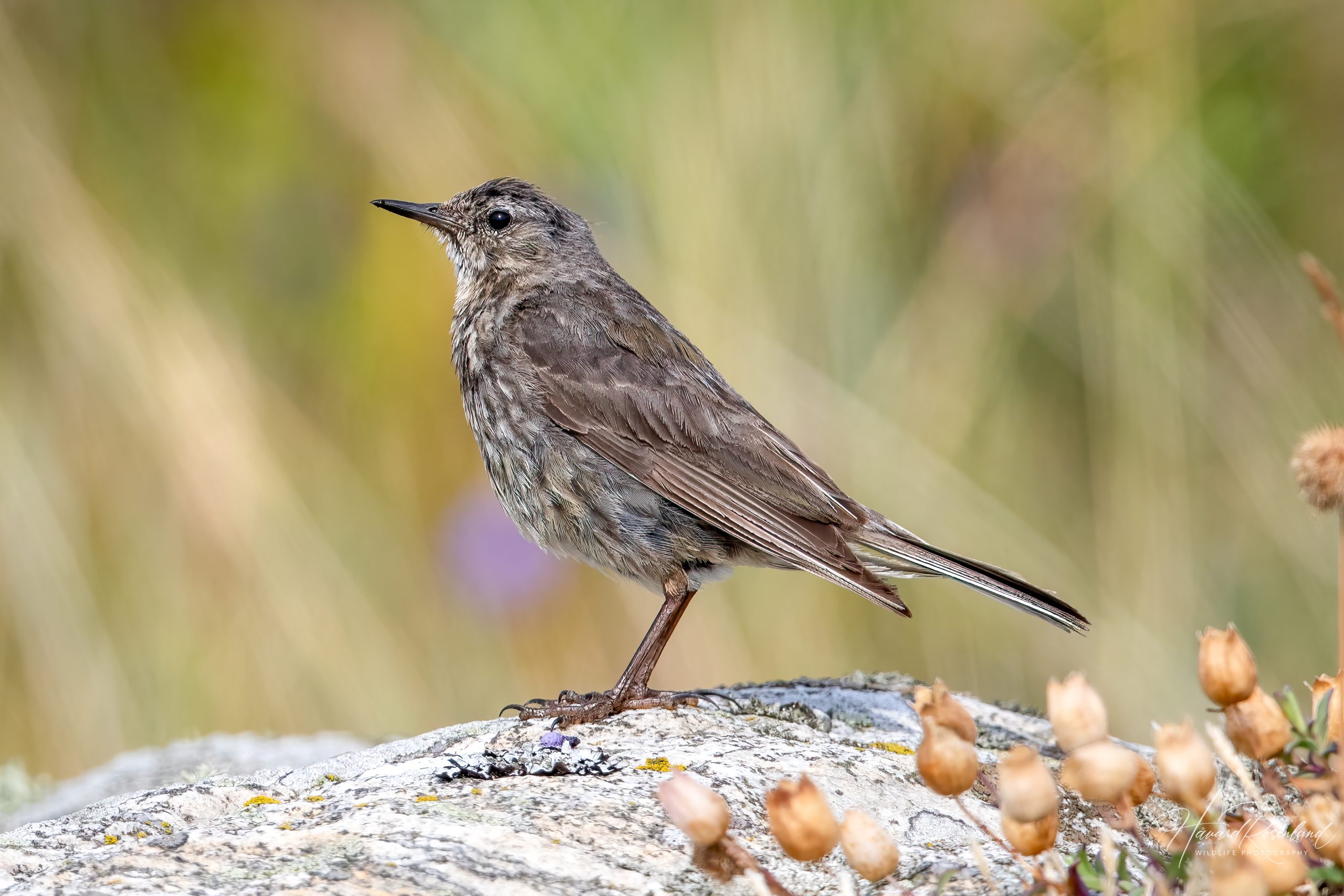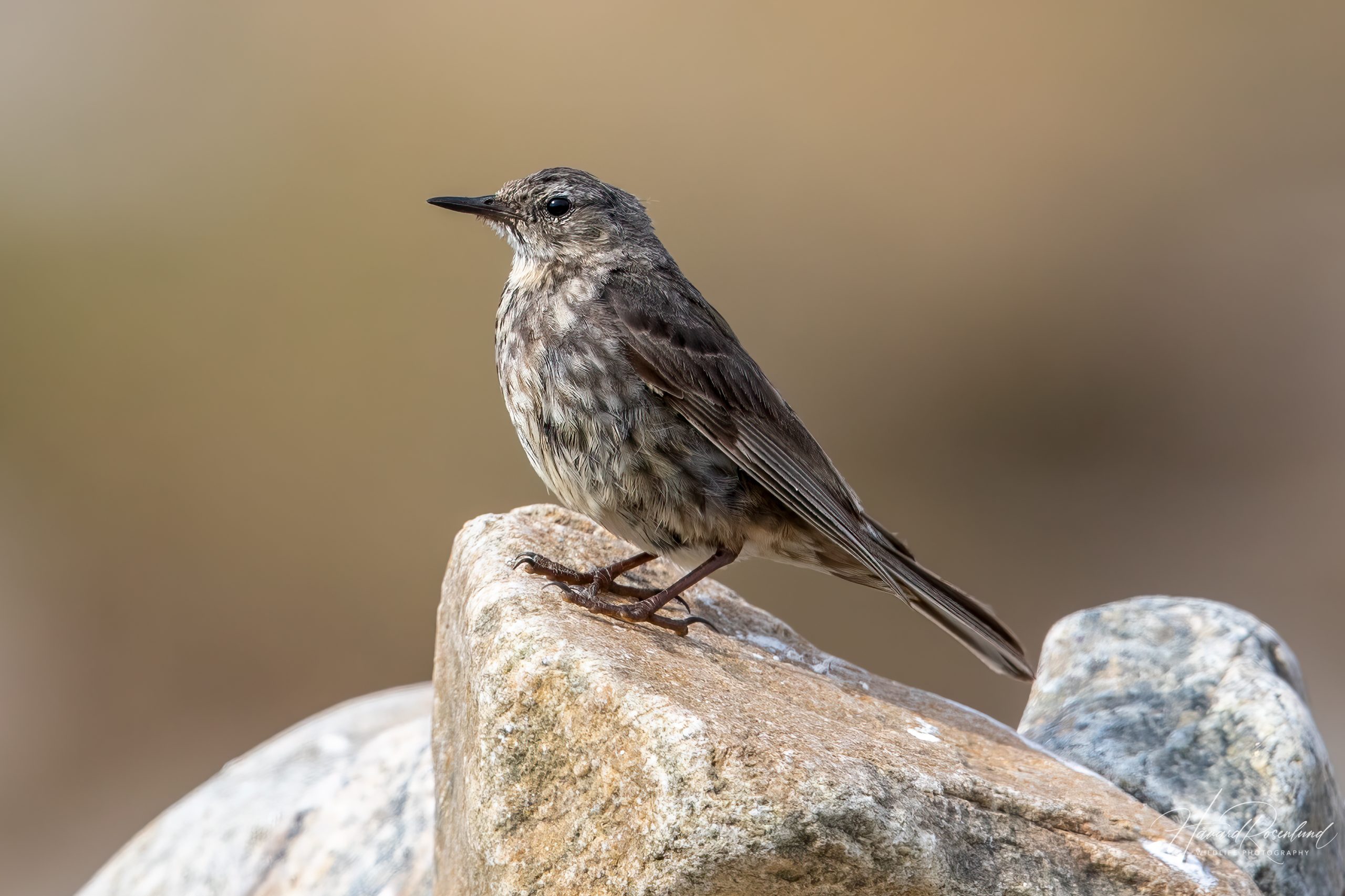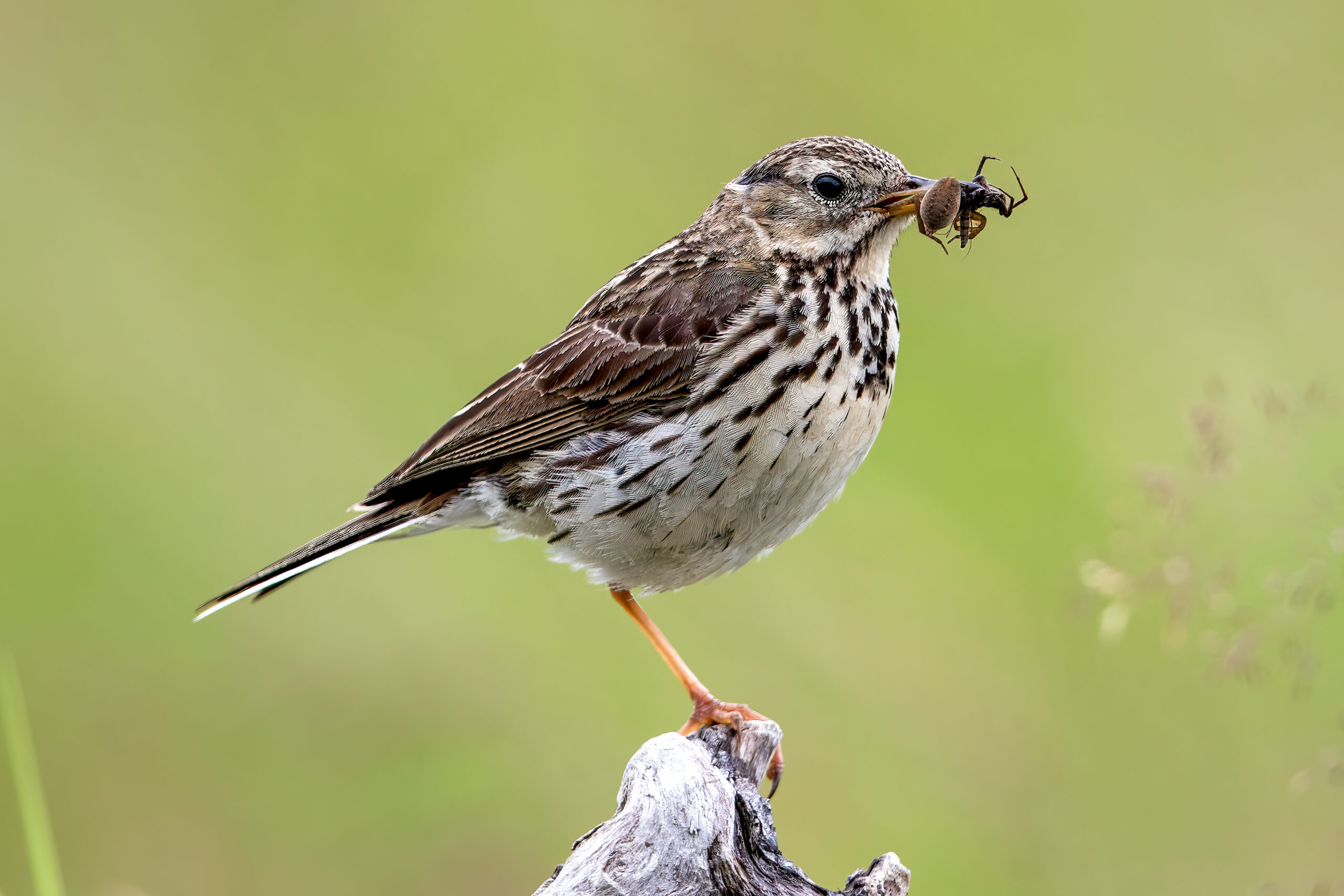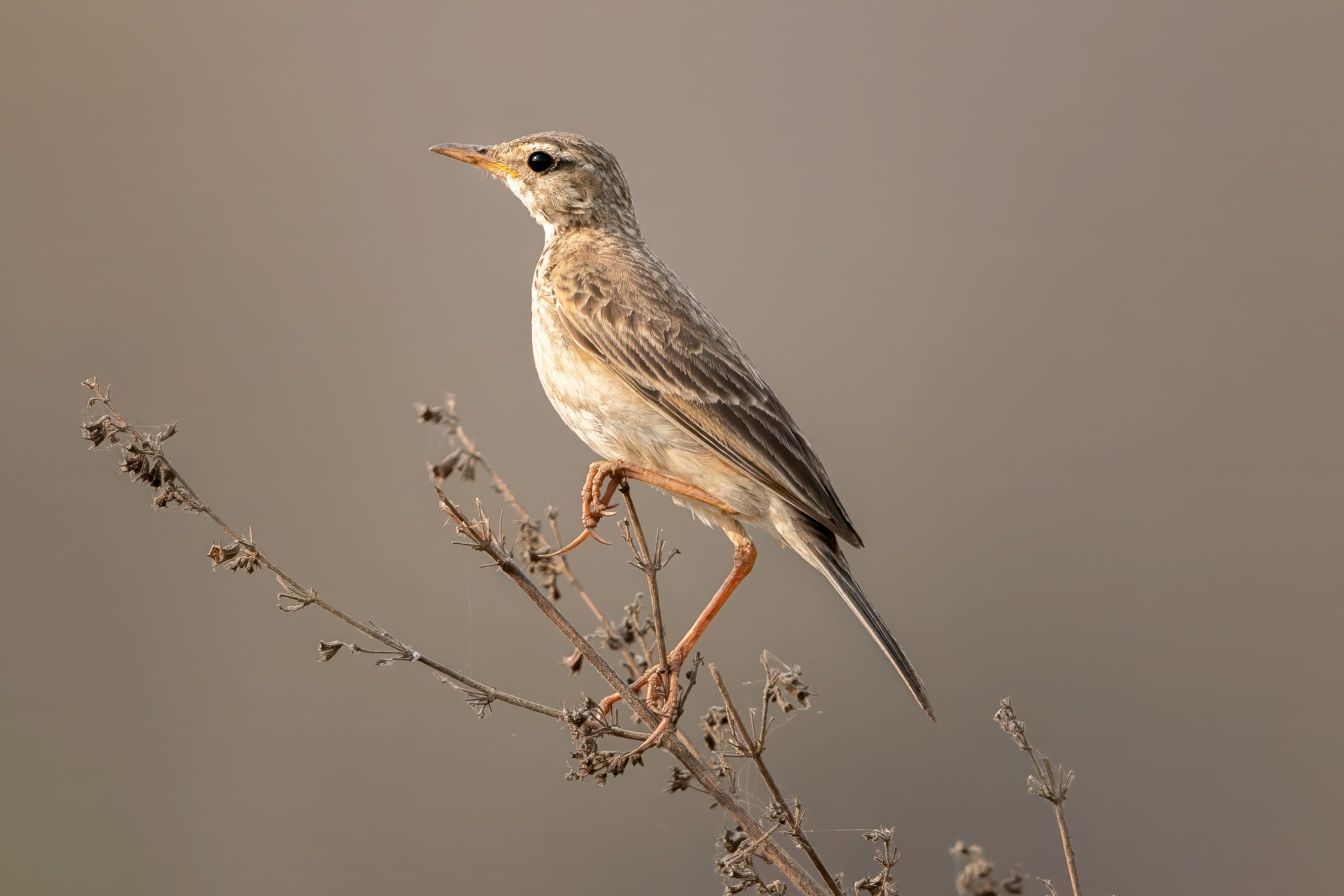Description
The rock pipit (Anthus petrosus) is a small passerine bird native to the coastal regions of Europe. It measures about 16.5 to 17 cm in length (6.5-6.7 in), with a wingspan of approximately 23 to 27 cm (9.0-10.6 in), and weighing between 18 to 27 grams (0.63-0.95 oz). This pipit exhibits a generally drab plumage that blends well with its rocky shore habitat. Its upperparts are olive-brown, streaked with darker brown, while its underparts are buff-colored with streaks on the breast and flanks. The rock pipit is often confused with the meadow pipit (Anthus pratensis), but it can be distinguished by its darker, more uniform coloration, a more blackish bill, and its preference for coastal areas. Additionally, the rock pipit has a stronger, more direct flight pattern compared to the meadow pipit.
Diet & habitat
Rock pipits are primarily found along rocky coastlines, tidal zones, and sea cliffs. They are well-adapted to their coastal environment, foraging for food on the ground or among rocks and seaweed. Their diet consists mainly of small invertebrates, such as insects, spiders, and marine crustaceans. They are known to probe into seaweed and under stones to find their prey. Occasionally, they may also consume seeds and other plant material. The rock pipit’s feeding behavior involves a combination of walking and short flights as it searches for food, often in the intertidal zone.
Migration
The rock pipit exhibits partial migratory behavior. While some populations, particularly those in milder climates, are resident year-round, others migrate short distances to find more favorable conditions during the winter. Migration generally occurs from September to November and again from March to May, with birds moving to southern coasts during colder months. These migrations are relatively short, often involving movements within the same country or to nearby regions.
Nesting
Breeding season for the rock pipit typically begins in April and lasts until August. During this period, males establish territories and perform aerial displays to attract females. Nests are constructed in crevices among rocks, under dense vegetation, or occasionally in man-made structures. The female lays a clutch of 4 to 6 eggs, which she incubates for about 13 to 15 days. Both parents participate in feeding the chicks, which fledge approximately 13 to 15 days after hatching. The rock pipit may raise two broods per year, depending on environmental conditions.
Status
The rock pipit is currently classified as least concern on the IUCN Red List due to its wide distribution and stable population trend. However, localized threats such as coastal development, pollution, and climate change could impact specific populations. Conservation efforts are focused on monitoring population trends and protecting critical habitats to ensure the species remains stable.











